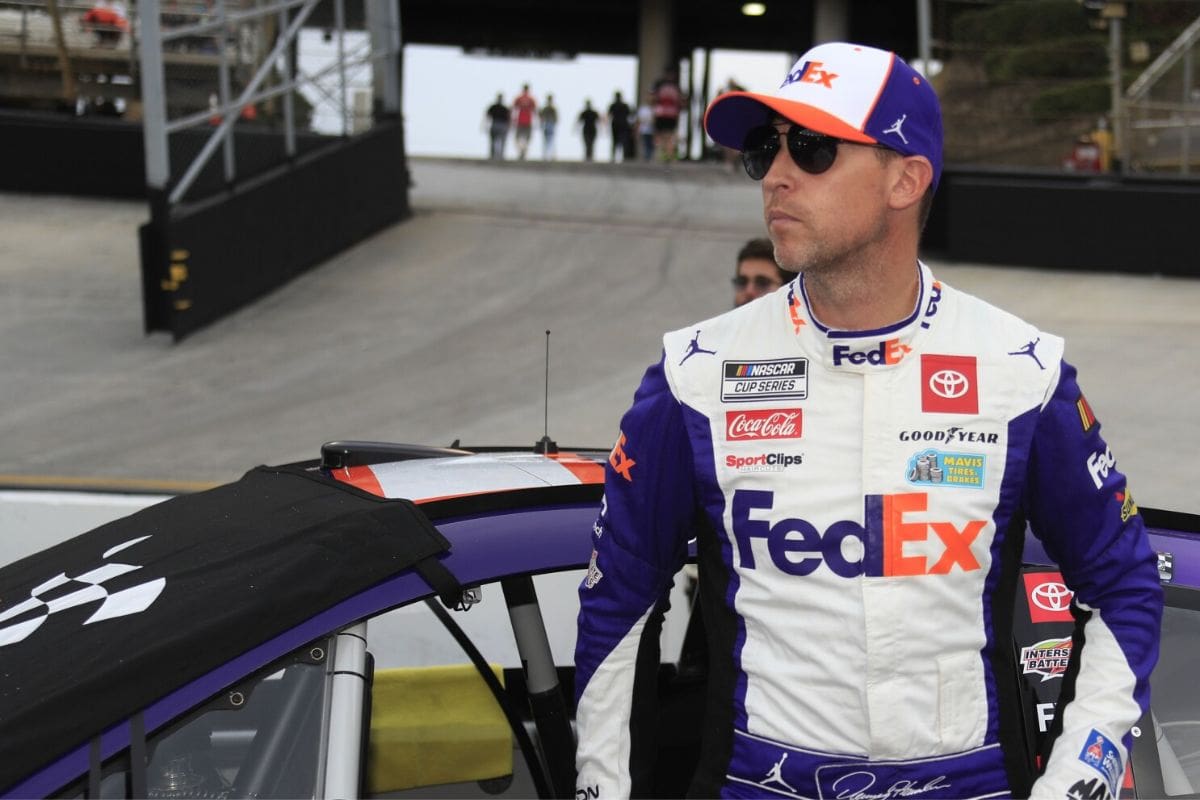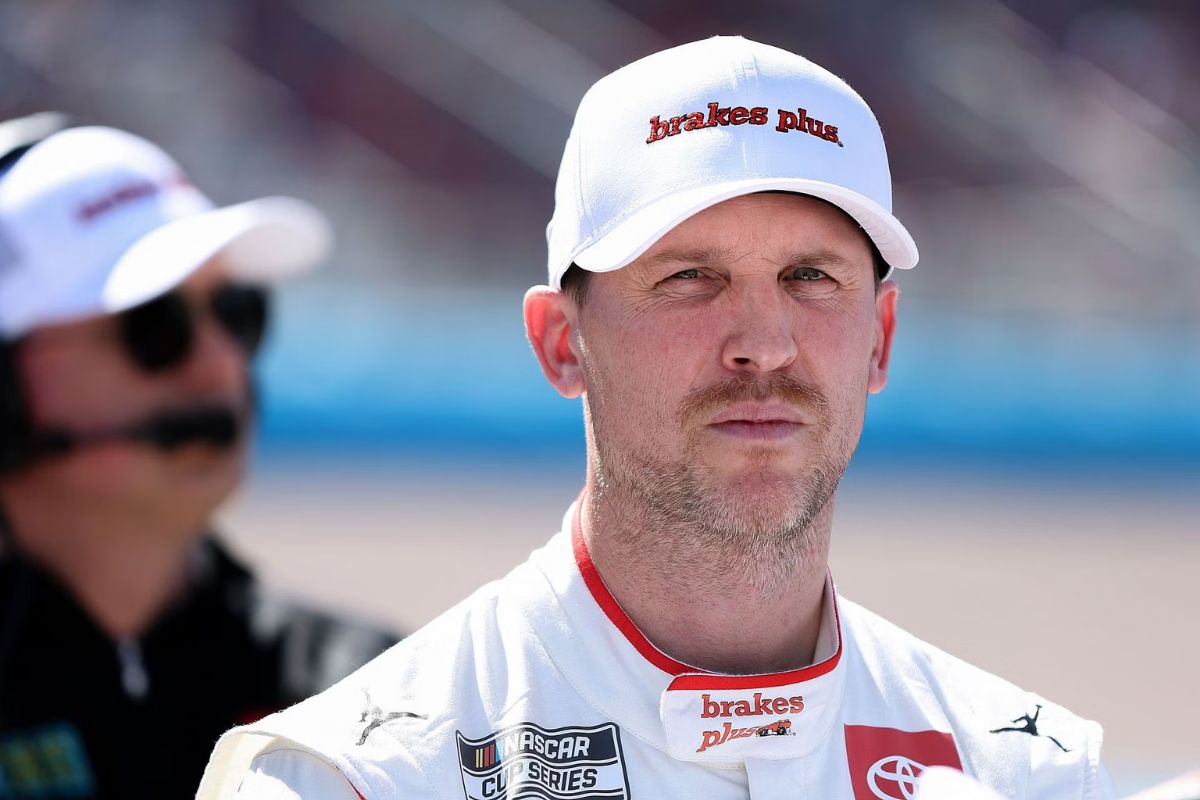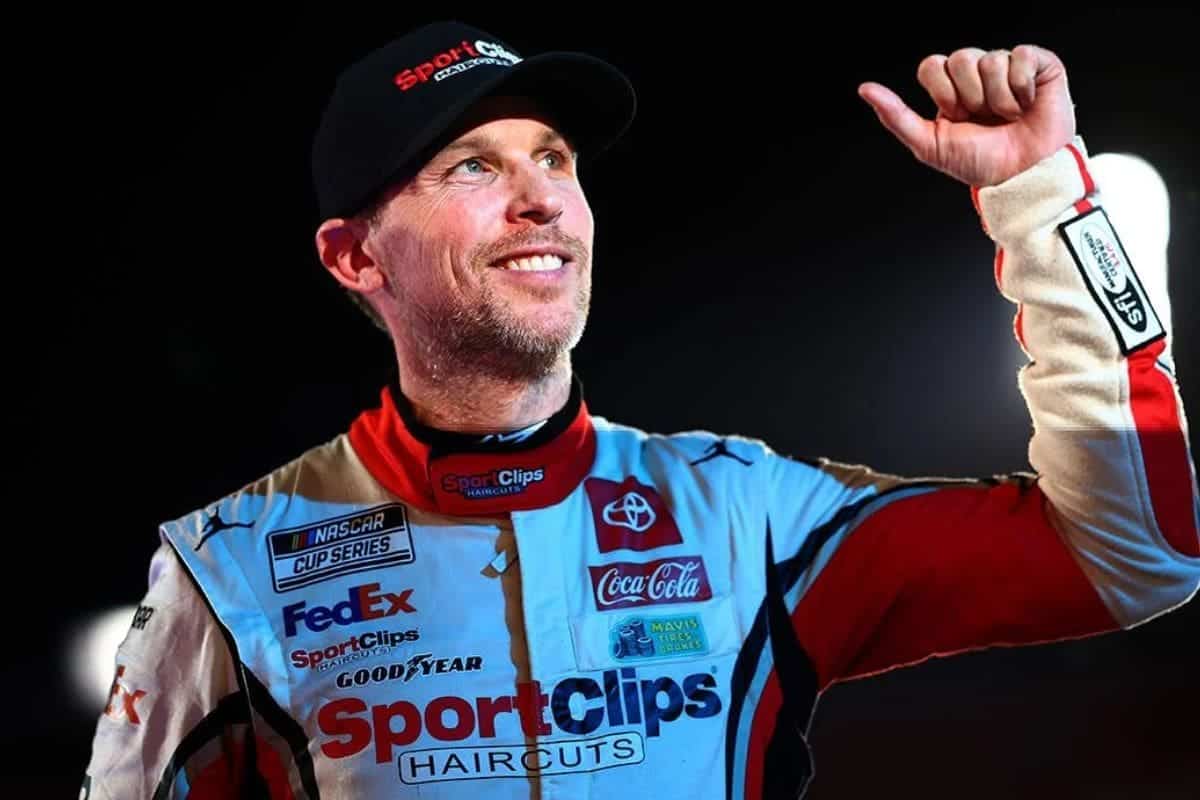Denny Hamlin Defies NASCAR’s Defense: In a recent turn of events at Talladega, Denny Hamlin’s bold stance against NASCAR’s defensive explanations regarding the significance of the scoring pylon has sparked a broader conversation about the balance between tradition and modernization in the sport. Hamlin’s assertion that the pylon was a personal symbol brings to light the deep-rooted emotional connections that these traditional elements foster among fans and participants equally. As NASCAR continues to navigate through its digital transformation, Hamlin’s defiance raises pertinent questions about what should be preserved in the face of relentless technological advancement. This incident serves as a critical moment, prompting stakeholders to evaluate the intrinsic values that define NASCAR’s unique identity.
Key Takeaways
- Denny Hamlin publicly opposed NASCAR’s replacement of traditional scoring pylons with digital boards at Talladega.
- Hamlin emphasized the personal significance and historical value of the traditional pylons.
- His stance reflects a broader driver and fan desire to preserve NASCAR’s traditional elements.
- Hamlin’s defiance underscores the tension between digital innovation and maintaining NASCAR’s heritage.
- The incident sparked a broader discussion on balancing modernization with respect for NASCAR’s legacy.
NASCAR’s Tradition Faces Digital Transformation
How is NASCAR balancing the preservation of its cherished traditions with the imperative of digital transformation?
The recent shift from traditional electronic scoring pylons to expansive digital video boards epitomizes this modernization, sparking a significant design dilemma. These pylons, having historical significance, serve as more than mere race position indicators; they are symbolic relics of NASCAR’s storied past.
Evolving to digital boards introduces a stark technology impact, aiming to enrich spectator engagement through enhanced visual content and interactive features.
However, this innovation challenge is not met without skepticism. Fan reaction varies widely, with purists expressing dismay over the loss of what they consider an integral part of the NASCAR experience.
The new digital installations, albeit impressive, may dilute the nostalgic atmosphere that many fans cherish. This sentiment reflects a broader apprehension towards rapid technological shifts in traditional sports settings.
NASCAR’s approach to digital transformation illustrates a delicate balancing act: integrating cutting-edge technology while respecting the essence of its heritage. The evolution of race day experience must consider both the allure of modernity and the preservation of legacy, ensuring that technological advancements enrich rather than overshadow the time-honored traditions of the sport.

Denny Hamlin’s Advocacy
Denny Hamlin has emerged as a prominent advocate for traditional elements in NASCAR, voicing concerns over the disappearance of scoring pylons which he believes are vital to the sport’s heritage. His advocacy highlights a deeper connection between NASCAR’s historical components and the contemporary racing experience, emphasizing the impact of maintaining traditional values within the sport.
The significance of Hamlin’s advocacy is multifaceted:
- Advocacy Impact: Hamlin’s stance mobilizes attention and resources towards preserving elements that are symbolic of NASCAR’s identity. His outspoken nature catalyzes discussions among stakeholders about the balance between innovation and tradition.
- Driver Support: By speaking out, Hamlin garners support from fellow drivers, many of whom share his sentiments but may not have voiced them. This collective driver support strengthens the argument against phasing out traditional features, showcasing a united front within the community.
- Fan Solidarity: Hamlin’s advocacy resonates with fans who cherish race day memories tied to traditional symbols like the scoring pylon. This fan solidarity amplifies the call for preserving such elements, highlighting their importance in enhancing the fan experience and maintaining a tangible link to the sport’s past.
Through these efforts, Hamlin not only champions the cause of traditional values but also fosters a sense of community and continuity in NASCAR.
“It was important for us personally. Kinda know where certain guys are, certain times, and certain laps. So it’s important to us, but again the team could let us know if it’s super important. They have their own scoring pylons and our own time on the scoring, ‘cause we wanna know all the time on where each person is at and not have to wait that two minutes for a scroll,”(denny hamlin)
Importance of Scoring Pylons
Scoring pylons, long considered an integral part of NASCAR’s spectacle, serve as an important visual reference for fans and a strategic aid for drivers during races. The presence of these pylons directly improves fan engagement by providing a clear, real-time update of race standings, which is essential for spectators both at the track and watching from afar. This instant dissemination of data helps maintain the pace and excitement inherent to NASCAR, contributing greatly to the entire event atmosphere.
Moreover, for drivers, these pylons are not just informative but are key in shaping race strategy and decision-making. Understanding one’s position relative to competitors can influence pit stops, overtaking, and defensive driving tactics, directly impacting driver safety by promoting informed choices in high-speed environments. The accuracy of race standings, displayed prominently on these pylons, ensures that all participants are on an even playing field, a fundamental aspect of competitive integrity.
The integration of advanced technology in scoring pylons also plays an important role. Modern pylons utilize sophisticated software and connectivity solutions, like on-track WiFi, to deliver seamless updates. This technological integration is crucial not only for operational efficiency but also enhances the safety and accuracy of the racing experience, fortifying NASCAR’s commitment to innovation and spectator satisfaction.

Nostalgia Meets Necessity
While technological advancements in scoring pylons have greatly improved the operational aspects of NASCAR races, there remains a significant appreciation for the traditional elements that have defined the sport for generations. The push and pull between nostalgic appeal and the necessity for modern technology encapsulate an essential aspect of NASCAR’s evolution.
The emotional connection to traditional scoring pylons is profound. They are not just functional instruments but symbols of continuity in a sport that has seen massive changes over its history. The historical significance of these pylons contributes to their cherished status. Fans and drivers alike have grown up with these iconic structures, which have been part of the live-track experience for over fifty years.
Here are three elements that illustrate the intersection of nostalgia and necessity in NASCAR:
- Emotional Connection: The profound bond fans have with traditional elements of the sport, which evoke memories and a sense of belonging.
- Historical Significance: Traditional pylons serve as living monuments of the sport’s storied past, offering a tangible link to decades of racing history.
- Fan Sentiment: Despite advancements, many fans express a desire to retain traditional features, which they feel are integral to the race-day experience.
As NASCAR continues to integrate modern technology, balancing these aspects will be vital to maintaining fan engagement and honoring the sport’s legacy.
"You don't have any idea where we qualified if you're an 11 fan or a 42 fan or someone like that."
-Denny Hamlin on the scoring pylon being removed at Talladega:
📹@stephen_stumpf pic.twitter.com/LVaBBI55yQ
— Frontstretch (@Frontstretch) April 20, 2024
Hope for the Future
As NASCAR approaches the GEICO 500 at Talladega Superspeedway, the anticipation builds over how the absence of traditional scoring pylons will influence the dynamics of the race and the preservation of the sport’s heritage. This shift, highlighted by Denny Hamlin’s concerns, encapsulates the tension between digital innovation and traditional values within NASCAR. The evolution towards digital tools suggests a changing landscape, yet the essence of racing, steeped in nostalgia and historic reverence, hangs in the balance.
The hope for the future hinges on integrating future advancements while maintaining the core aspects that have defined NASCAR. This scenario is not unique to auto racing; many sports grapple with balancing technological progress with tradition. However, the path NASCAR chooses could set a precedent in sports culture, potentially influencing other fields facing similar dilemmas.
The key lies in creating a hybrid model where digital enhancements and tradition coexist, enriching the experience without diluting the sport’s soul. This balanced approach could satisfy both traditionalists and modernists, forging a sustainable model that respects the heritage while embracing innovation. Hamlin’s advocacy for this balance highlights the broader dialogue about preserving the intrinsic values amidst a rapidly evolving technological backdrop.
News in Brief: Denny Hamlin Defies NASCAR’s Defense
To sum up, Denny Hamlin’s advocacy for the preservation of scoring pylons at Talladega highlights a critical dialogue between tradition and modernization within NASCAR. His actions emphasize the profound connection between historical elements and fan experience, showcasing the importance of honoring these traditions amid technological advancements.
This stance not only maintains a tangible link to the sport’s heritage but also nurtures a sense of continuity and identity, which is crucial for NASCAR’s evolving narrative.
Our Reader’s Queries
Q: Has Denny Hamlin ever won on a road course?
A: Hamlin secured his inaugural road course triumph by commanding just 10 laps of the 90-lap race, notably clinching victory in the decisive moments. This win marked redemption for Hamlin following a near-victory at Sonoma Raceway earlier in the season, where a misstep on the final lap cost him the win, allowing Tony Stewart to snatch victory.
Q: How did Denny Hamlin get into NASCAR?
A: Making his NASCAR Cup Series debut in 2005 at Kansas Speedway with JGR, Hamlin attributes his early success to J.D. Gibbs, seen here in 2009. In a Twitter video from 2017, Hamlin acknowledged, “He’s the one who actually gave me my first opportunity with Joe Gibbs Racing.”
Also Read: Denny Hamlin Reveals Teams Slash Inventory Spending From $1m to $100k!



Whi made Denny the boss …maybe he needs to buy the nylon..put it by his front door and he will know who’s in the lead …he can’t tell Tallaedaga how to run their track